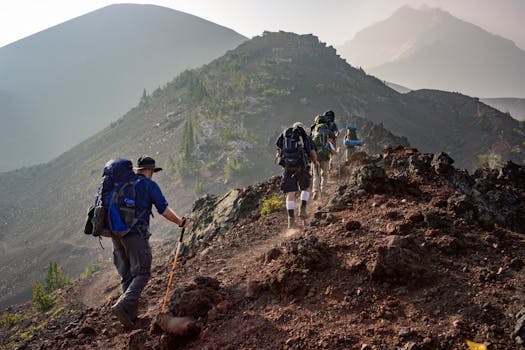Choosing the Right Clothes for Trekking: The Three-Layer System
Trekking is an exhilarating way to connect with nature, but it also requires careful planning, especially when it comes to clothing. The right attire can make the difference between an enjoyable adventure and a miserable experience. One of the most effective methods for dressing for trekking is the three-layer system. This article will explore the components of this system, its benefits, and tips for selecting the right clothing for your next trek.
The Three Layers Explained
The three-layer system consists of a base layer, a middle layer, and an outer layer. Each layer serves a specific purpose and works together to keep you comfortable in varying weather conditions.
1. Base Layer: The Foundation of Comfort
The base layer is the first line of defense against the elements. Its primary function is to wick moisture away from your skin, keeping you dry and comfortable. Here are some key features to consider:
- Material: Look for synthetic fabrics like polyester or natural fibers like merino wool. Both options effectively wick moisture and provide comfort.
- Fit: A snug fit is essential for moisture management. Loose clothing can trap moisture and lead to discomfort.
- Seam Construction: Flat seams reduce chafing, which is crucial during long treks.
For example, a study by the American Journal of Sports Medicine found that wearing moisture-wicking fabrics can significantly reduce the risk of hypothermia in cold conditions, highlighting the importance of a good base layer.
2. Middle Layer: Insulation and Warmth
The middle layer provides insulation, trapping heat close to your body while still allowing moisture to escape. This layer is particularly important in colder climates or during early morning and late evening treks. Consider the following:
- Material: Fleece, down, or synthetic insulation are popular choices. Fleece is lightweight and breathable, while down offers superior warmth.
- Weight: Choose a middle layer that balances warmth and weight. Lightweight options are easier to pack and carry.
- Layering Capability: Ensure that your middle layer can easily fit under your outer layer without restricting movement.
According to the Outdoor Industry Association, 60% of trekkers reported that they felt more comfortable and performed better when wearing appropriate insulation layers, underscoring the importance of this component.
3. Outer Layer: Protection from the Elements
The outer layer is your shield against wind, rain, and snow. It should be both waterproof and breathable to keep you dry while allowing sweat to escape. Here are some features to look for:
- Waterproofing: Look for jackets with a waterproof rating of at least 10,000 mm for adequate protection.
- Breathability: Fabrics like Gore-Tex or eVent are excellent choices as they allow moisture to escape while keeping water out.
- Features: Consider additional features like adjustable hoods, cuffs, and ventilation zippers for added comfort.
A case study conducted by the National Outdoor Leadership School (NOLS) found that trekkers who invested in high-quality outer layers reported a 40% increase in overall comfort during adverse weather conditions.
Choosing the Right Clothes: Tips and Considerations
When selecting clothing for trekking, consider the following tips to ensure you make the best choices:
- Weather Conditions: Always check the weather forecast before your trek and choose layers accordingly.
- Activity Level: Consider how strenuous your trek will be. More intense activities may require lighter, more breathable layers.
- Personal Comfort: Everyone has different preferences. Try on various materials and fits to find what works best for you.
Conclusion: The Key Takeaways
Choosing the right clothes for trekking is essential for a successful and enjoyable experience. The three-layer system—comprising a base layer, middle layer, and outer layer—provides a comprehensive approach to managing temperature and moisture. By understanding the purpose of each layer and selecting appropriate materials, trekkers can enhance their comfort and performance in the great outdoors. Remember to consider weather conditions, activity levels, and personal comfort when making your selections. With the right clothing, you can focus on the beauty of nature rather than the discomfort of the elements.
